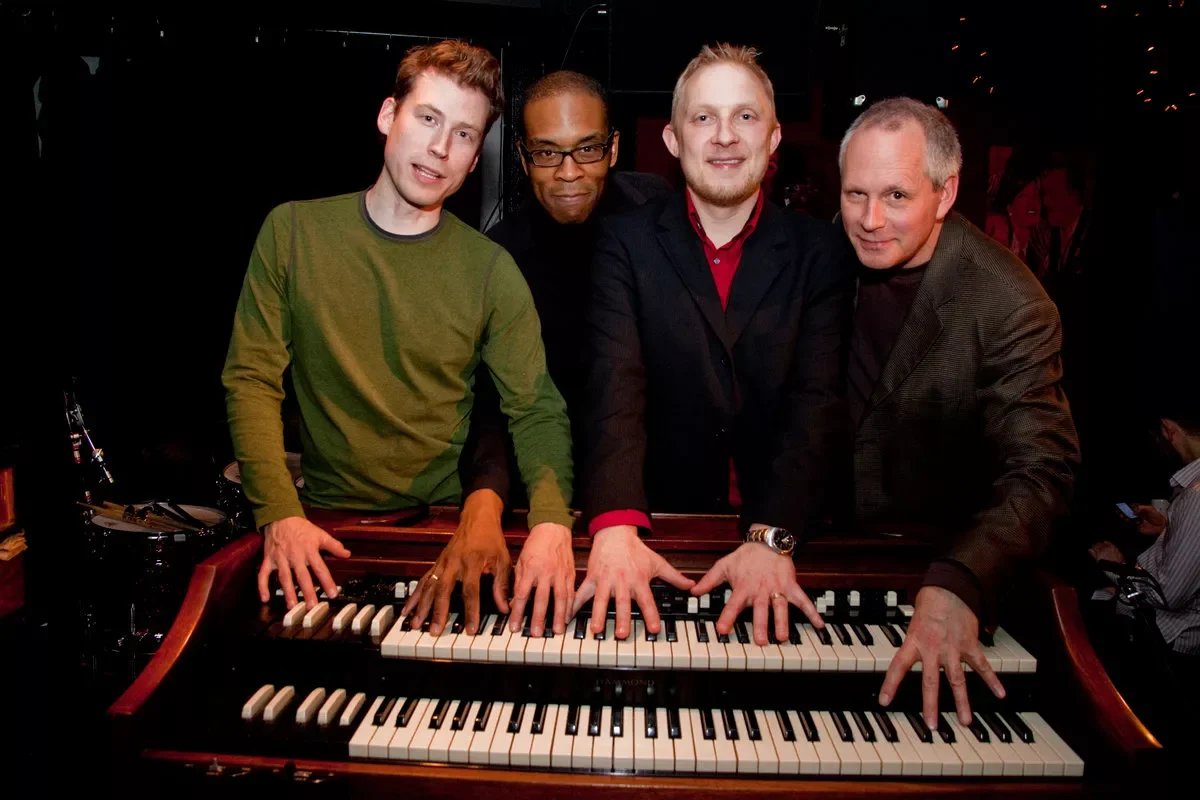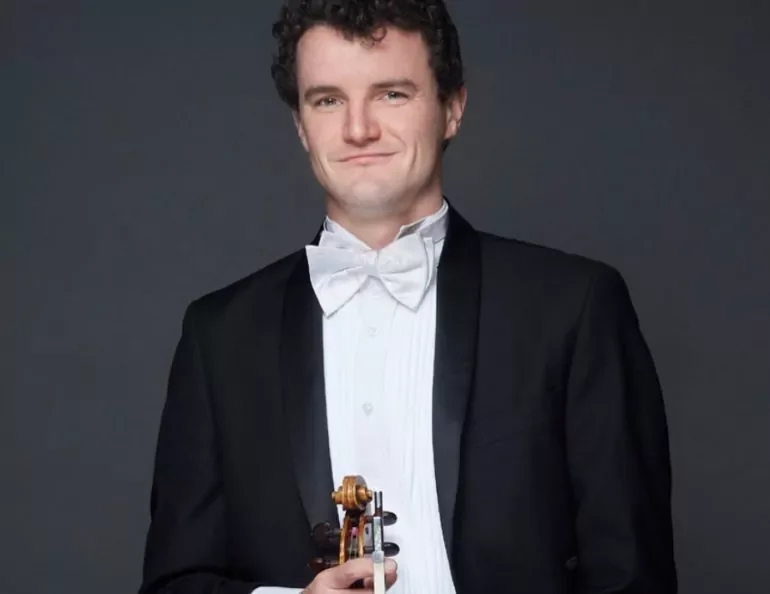Review: Vancouver Opera's A Midsummer Night's Dream conjures heady music and big laughs
Rare staging of Britten opera mixes the mysterious and the farcical
Daniel Moody’s Oberon casts a spell on Magalie Simard-Galdes’s Tytania in Vancouver Opera’s A Midsummer Night’s Dream. Photo by Tim Matheson
Vancouver Opera presents A Midsummer Night’s Dream at the Queen Elizabeth Theatre to February 19
BEGUILING AND AMBIGUOUS, the operatic music of English neoclassical composer Benjamin Britten can at first feel strange and challenging, with its tonal painting—its sudden horn blasts and heady string glissandos. That was no barrier to the Vancouver Opera this weekend, which welcomed a soldout, 2,900-strong audience to the Queen Elizabeth Theatre on Saturday night to take in the three-hour 20th-century opera A Midsummer Night’s Dream. That may be in part because the opera is based on one of Shakespeare’s most beloved plays.
Whatever the reason, it’s exciting not just that Vancouver Opera is taking the leap of staging this rarely seen work in uncertain postpandemic times, but that viewers turned out in the kind of droves usually reserved for Madama Butterfly.
Stage directed by young Aria Umezawa, this energized production works to heighten the 1960 opera’s contrasts: the sinister and serious with buffoonery, and the mysterious with all-out bawdiness. One moment, its small army of fairies is cringing at having to scratch a donkey-headed Bottom behind the ears, the next, they’re singing a chorus so eerily ethereal you’ll break out in goosebumps.
In the story, two couples run away to the forest, only to have the fairy Puck use a magic flower potion to make both men fall in love with the same woman. Elsewhere, Puck helps his master Oberon play a similar trick on the fairy queen, Tytania. And meanwhile, a group of “rustics” bumble around trying to stage a play—until a fairy turns one of them into a donkey.
Puck (Kunji Ikeda) with the fairy chorus in A Midsummer Night’s Dream. Photo by Tim Matheson
A familiarity with Shakespeare’s original play will affect how much you get out of this production, with its whimsical spells, wayward plot, and characters moving between real and dream worlds. Luckily, A Midsummer Night’s Dream saw a successful staging just last summer at Bard on the Beach, where it’s been a staple for local audiences. Britten hones closely to the original, putting large swaths of the script to music.
That music is often spellbinding, the Jacques Lacombe-led VO Orchestra adding ample atmosphere. Another highlight is the haunting beauty of the children’s fairy chorus.
The piece is a great showcase for young talents, including countertenor Daniel Moody as Oberon, who sounds assured and otherworldly riding the strange and near-hallucinatory notes of “I know a bank”, and brings a delicate, diaphonous quality to his duet with a charismatic Magali Simard-Galdes’s Tytania. Other memorable moments include Spencer Britten, Hillary Tufford, Jonelle Sills, and Clarence Frazer’s performance of the punishingly chaotic quartet that comes mid-way through Act 2. Mezzo Tufford is warm and fun as Hermia, and soprano Sills shows real star power as Helena.
On the comedic end, Peter McGillivray, who brought the house down last year in VO’s HMS Pinafore, continues his scene-stealing antics with Bottom—the one the fairies turn into a literal ass. Amid the other “rustics” who put on the goofy opera-within-an-opera here, rising tenor Asitha Tennekoon, playing Flute, shows he’s as strong with farcical physical comedy as arias. Their staged tale of Pyramus and Thisbe had the audience in stitches on opening night—rarely do you hear laughs this big at a night at the opera.
In the non-singing role of Puck, Kunji Ikeda holds the show together—and keeps the audience rapt whenever he’s onstage. He uses his lithe, acrobatic physicality to make you believe he might actually be a mischievous sprite in real life. In one scene, he does back flips to exit the stage; in another, he jokingly looks at the surtitles high above the stage to “remember” his lines.
The design, all built in Vancouver, doesn’t quite mesh with the lush, otherworldly qualities in the music and libretto. Chimerik Collective’s animated images of wisteria-like leaves and blooms furling and unfurling against black, and projected across gauzy curtains, help suggest a magic forest. But they’re set behind a brutalist, cement-grey revolving set that features busy, art-nouveau-ish brass railings, ladders, and a Hula-Hoop-shaped circular portal. Amid Roberta Doylend’s costumes, favourites include the ‘80s-avant-garde black-and-white outfits of the four lovers in the last act, and the ethereal blue shimmer of all the fairies in the dark forest for their final chorus. Look for some familiar West Coast references in her gang of rustics—including a postie and a park ranger.
In the end, it’s an enchanting, entertaining evening—even though for those whose operatic tastes are limited to, say, Puccini and Mozart, the score is going to prod them out of their comfort zone. Others will embrace the rare chance to experience orchestrations that revel in the space between light and dark, by turns cinematic, baroque, and out of this world. And what it may lack in deeper Shakespearean messages about love, it makes up for in laughter. This Midsummer somehow ends up being both a crowd-pleaser and a crowd-challenger.














